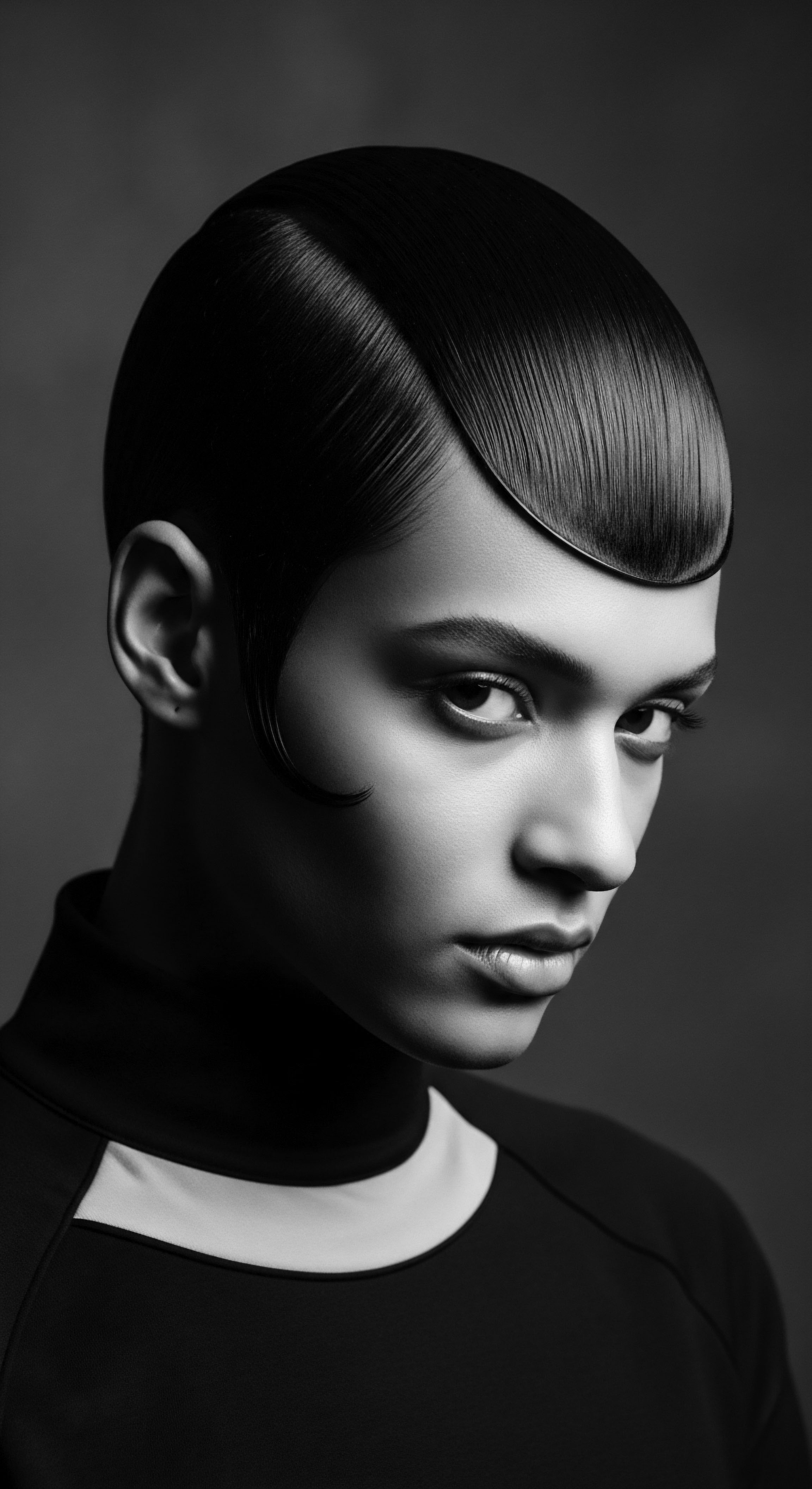
Roots
Consider the deep rhythm of textured hair, each coil a testament to resilience, a living story whispered across generations. It holds ancestral memory, a heritage woven into its very structure, reflecting practices passed down through time. For those with hair that dances in spirals and tight curls, the tools used for its care have always held a profound significance, far beyond simple utility. They are extensions of hands that nurtured, protected, and adorned, acting as conduits of wisdom.
This is not merely about a comb; it is about recognizing the ingenuity of those who understood textured hair’s intrinsic nature long before modern science articulated its complexities. It stands as a testament to deep observation and a reverence for hair that shaped its care.
Ancient comb designs, particularly those originating from African civilizations, were crafted with a keen awareness of textured hair’s distinct architecture. These were tools born from necessity and cultural understanding. The goal was to detangle without distress, to style without breakage, and to honor the hair’s natural inclination.
Archeological evidence from sites in Kush and Kemet (ancient Egypt and Sudan) reveals combs dating back as far as 7,000 years, often fashioned from natural elements like wood, bone, and ivory. Their prevalence in burial sites speaks volumes, underscoring hair’s sacred place and the tools used in its cultivation.
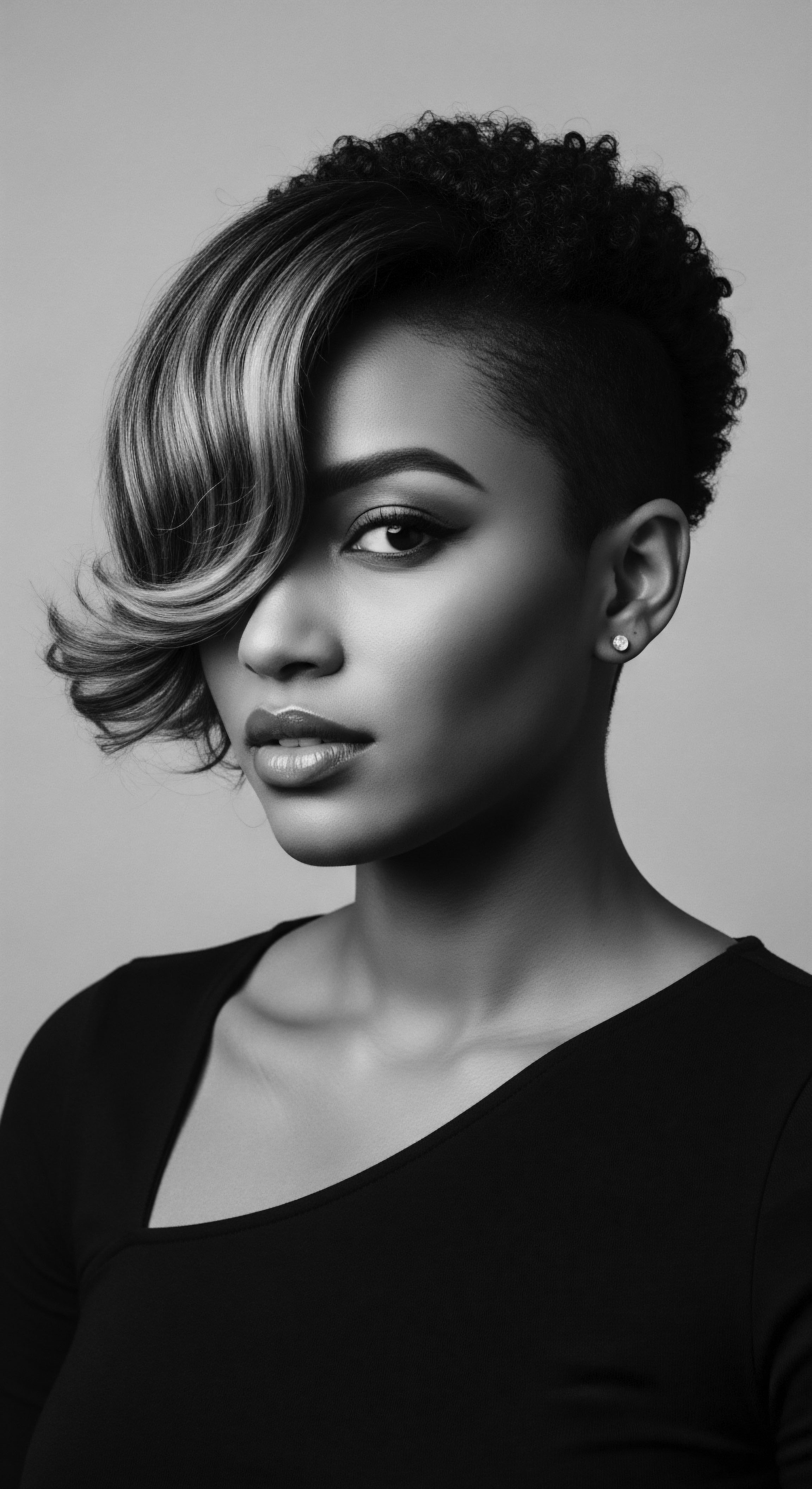
Hair’s Coil, Ancestral Wisdom Uncoiled
The unique characteristics of textured hair – its helical shape, the varying diameters along the strand, and its tendency to intertwine – present particular challenges for styling and maintenance. Unlike straight or wavy hair, which allows for smooth gliding of fine-toothed implements, coily and kinky textures require space and gentle separation to preserve their integrity. The strength of textured hair lies in its ability to resist breakage when handled with care, but it also possesses a delicate nature when met with inappropriate force.
Our forebears, without microscopes or chemical analyses, instinctively understood these fundamental aspects. They observed the hair’s behavior, its needs, and its responses to different materials and motions. This collective, lived experience gave rise to tools designed not to force conformity, but to work in harmony with the hair’s inherent design.
Ancient comb designs reveal a profound ancestral understanding of textured hair’s unique structural needs.

What Materials Were Used For Ancient Combs?
The choice of material for ancient combs was not arbitrary; it reflected both what was readily available in the environment and what properties best served the hair.
- Wood ❉ Often favored for its natural warmth and porosity, wood, particularly hardwoods, offered a smooth surface that minimized friction. Wooden combs were less likely to snag or cause static, which can exacerbate tangling in textured hair.
- Bone ❉ Animal bones and horns, shaped and polished, provided a sturdy yet relatively smooth surface. Their durability meant they could withstand repeated use on dense hair.
- Ivory ❉ In regions where it was accessible, ivory was a premium material, valued for its smooth finish and aesthetic appeal. Combs crafted from ivory were often status symbols, signifying wealth and social standing.
These materials, naturally rich in oils or capable of being smoothed to a high polish, contributed to the gentle detangling process. They were chosen not just for their availability, but for their tactile qualities that protected the hair fiber.
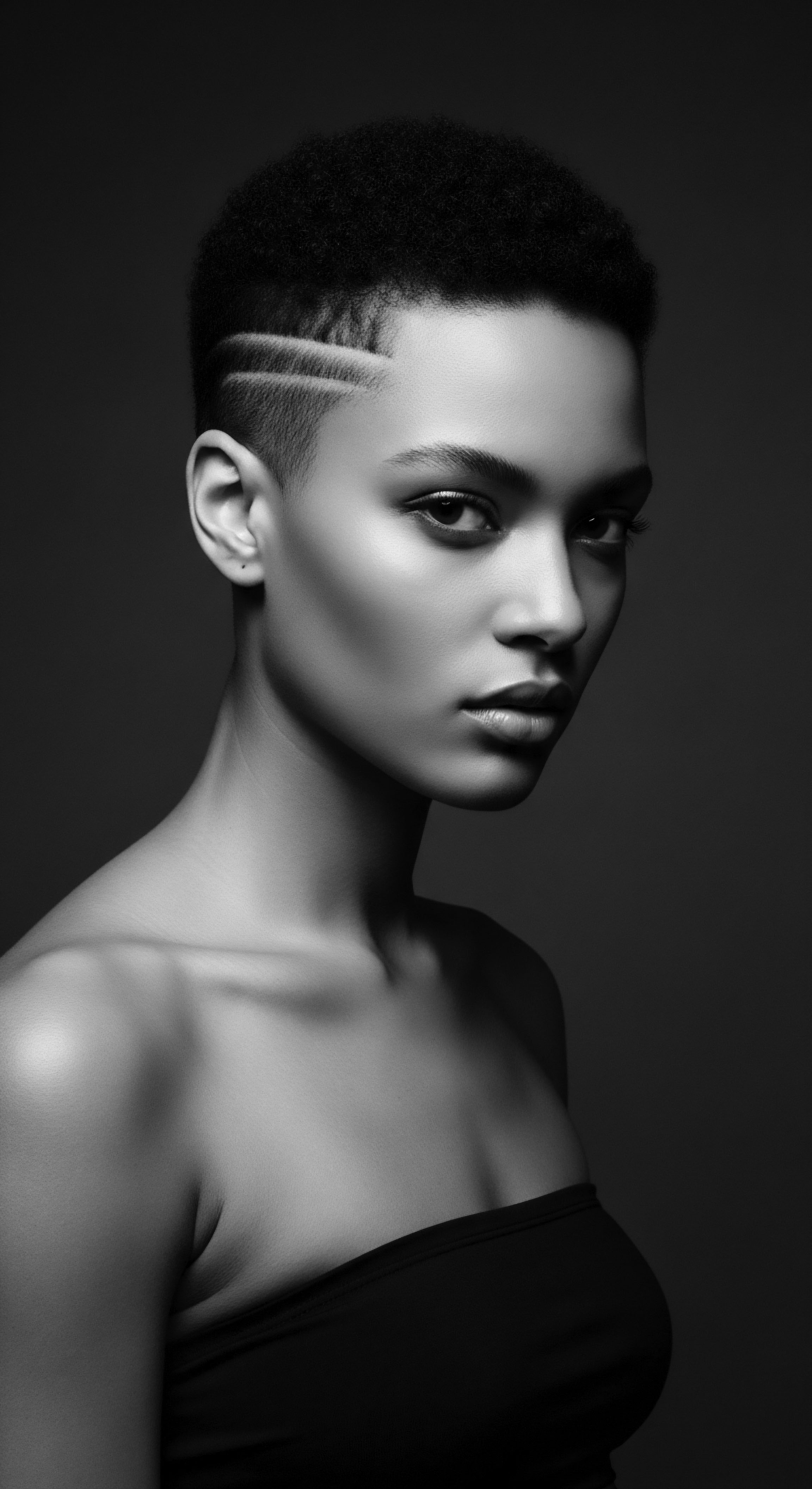
Early Comb Forms and Hair’s Demands
The earliest combs from African civilizations often presented as a single row of widely spaced, robust teeth. This fundamental design directly addressed the tightly coiled nature of textured hair. The wide gaps between the teeth allowed larger sections of hair to pass through, preventing the comb from getting stuck or ripping through knots. The sturdy, sometimes slightly tapered teeth, rounded at their tips, navigated the hair’s natural coiling patterns rather than fighting against them.
Archaeological finds from Kemet, dating back thousands of years, showcase combs whose tooth spacing was notably wider than those from contemporary European societies. This difference speaks volumes about the specialized knowledge held by the creators of these tools, knowledge rooted in generations of interacting with hair of African descent. These broad-toothed combs, sometimes referred to as “piks,” offered precisely what textured hair requires ❉ gentle, deliberate separation.
Beyond their practical function, these ancient combs were frequently adorned with symbolic carvings – animals, human figures, or geometric patterns – reflecting cultural beliefs, status, and connection to the natural world. Their presence in burials underscores their dual role as utilitarian objects and sacred artifacts, deeply entwined with identity and the spiritual journey. The care of textured hair was, and remains, a sacred practice, connecting us to those who came before.
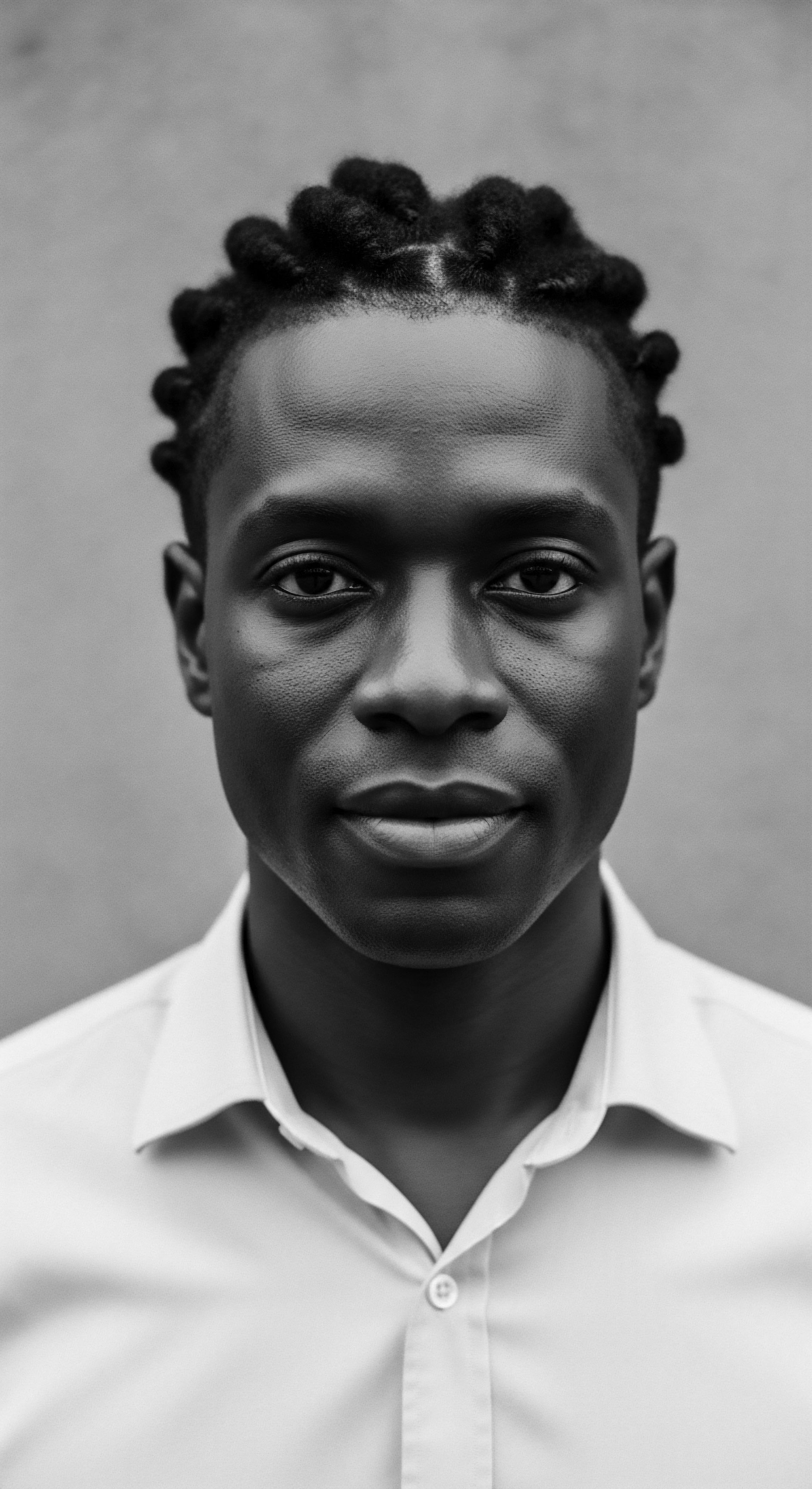
Ritual
The tending of textured hair, particularly within Black and mixed-race communities, has always been more than a task; it stands as a cherished ritual, a ceremony of care and connection. This daily or weekly practice, passed through hands that loved and understood, shapes not only appearance but also identity. Ancient comb designs were integral to these routines, acting as vital instruments in the transformation of hair, from its natural state to meticulously crafted styles, reflecting community, status, and inner spirit.
The very structure of a comb, its materials, and the way it was held, all influenced the styling possibilities for varied hair textures. Historical records and ethnographic studies reveal a legacy of ingenuity, where tools were adapted and refined over millennia to work in concert with hair’s unique qualities.

How Did Comb Length Support Styling Practices?
Ancient combs, especially the long-toothed “afro-pick” variations found in regions like Kemet and West Africa, were designed to penetrate the dense, coiled mass of textured hair without snagging. Their extended length allowed them to reach the scalp, lifting and separating the hair from its roots, providing volume and shaping without disrupting the delicate curl pattern. This was critical for styles that emphasized fullness and height, common in many African cultures.
Consider the historical context ❉ elaborate hairstyles were often markers of social status, age, marital status, or tribal affiliation. Such styles, from intricate braids to regal up-dos, demanded tools that could manage and sculpt hair with precision and gentleness. The length of the comb teeth, combined with their width and spacing, enabled the creation of these complex designs while minimizing stress on the hair shaft.
| Design Feature Wide Tooth Spacing |
| Catered Need for Textured Hair Prevents snagging, minimizes breakage, allows hair to pass through without resistance. |
| Historical/Cultural Context Observed in Predynastic Egyptian combs, indicating early understanding of fragile hair. |
| Design Feature Long, Sturdy Teeth |
| Catered Need for Textured Hair Reaches scalp for volume, lifts hair from root, defines coils without pulling. |
| Historical/Cultural Context Essential for maintaining voluminous styles and intricate coiffures in many African societies. |
| Design Feature Rounded, Smooth Tips |
| Catered Need for Textured Hair Protects scalp from scratches, reduces cuticle damage during detangling. |
| Historical/Cultural Context Reflects a deep understanding of scalp health and hair fiber integrity in traditional practices. |
| Design Feature These design principles speak to generations of ancestral knowledge guiding the creation of tools for textured hair. |

Understanding Hair Density and Comb Design
Textured hair often grows with remarkable density, presenting a formidable challenge for grooming. Ancient comb designs addressed this by featuring fewer, yet widely spaced, teeth. This deliberate spacing permitted the tool to glide through substantial sections of hair, detangling from the ends upwards, a method still recommended today for minimizing breakage. The robust construction of these combs, often carved from durable wood or bone, ensured they would not succumb to the pressure of dense coils.
The ability of a comb to separate hair effectively without causing pain or damage was paramount. For communities where hair dressing was a communal act, a shared experience, the comfort of the person whose hair was being styled was surely considered. The wide-toothed comb, by its very design, embodies this gentle approach, enabling a smooth passage through hair that might otherwise resist.
The purposeful spacing of ancient comb teeth allowed for gentle navigation of dense, coiled hair.

The Interplay of Material and Function
The specific materials chosen for combs also contributed to their efficacy. Wooden combs, for example, possess natural anti-static properties, a significant benefit for textured hair, which can become dry and prone to frizz when static electricity builds. The smooth, polished surfaces of bone and ivory combs, achieved through painstaking hand-crafting, further reduced friction. This careful attention to material and finish speaks to a profound respect for the hair and the delicate nature of its cuticle layer.
These combs were not just objects; they were extensions of care, enabling the intricate styling that held cultural weight. They facilitated the creation of protective styles that safeguarded the hair from environmental elements, a tradition deeply embedded in African heritage. Braids, twists, and locs, often taking hours to complete, relied on effective detangling and sectioning tools to ensure longevity and neatness. The design of ancient combs provided the foundation for these styling triumphs.
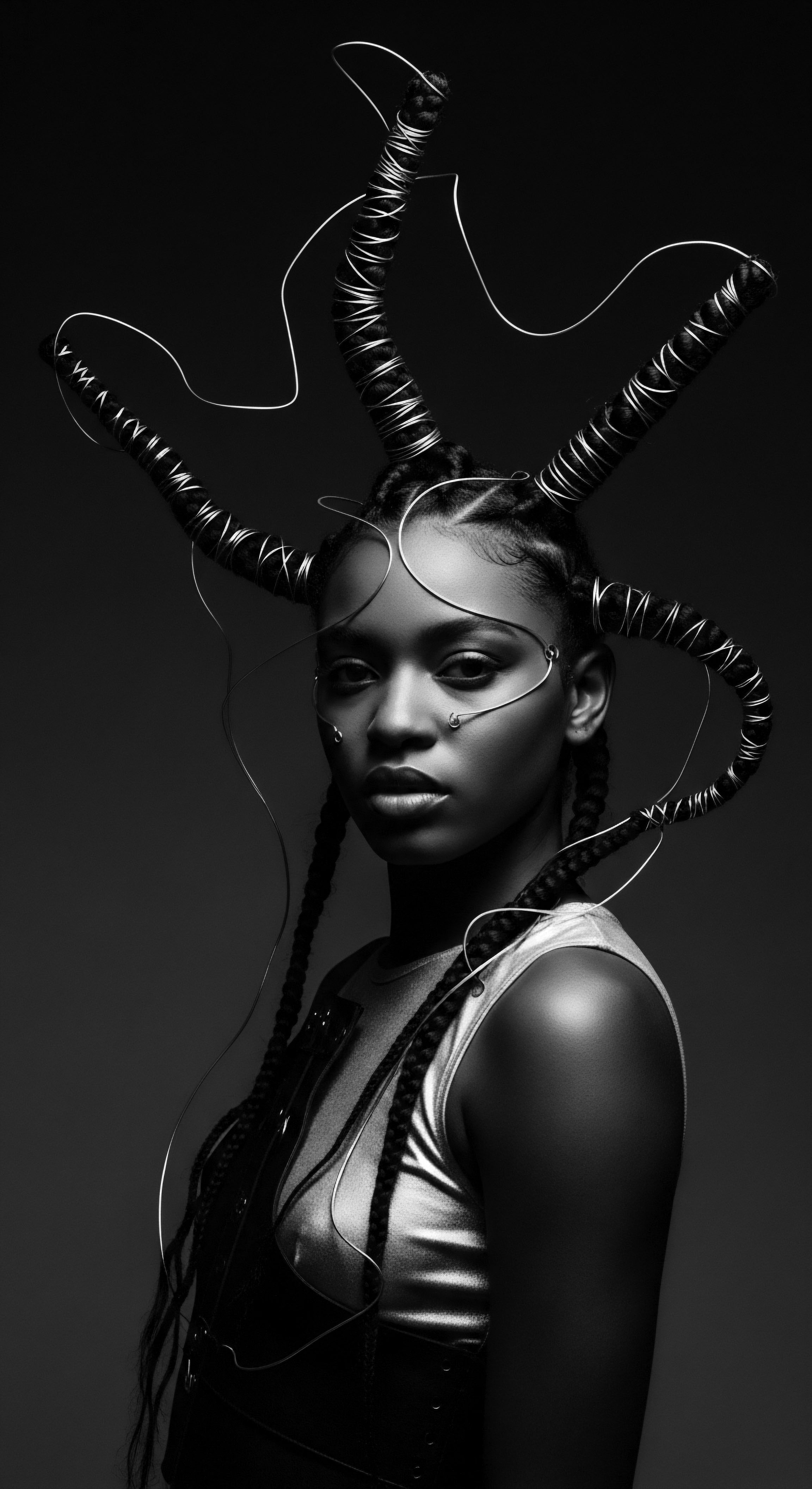
A Legacy of Protective Styling
Protective styles, a cornerstone of textured hair care, have deep roots in ancestral practices. Combs played a quiet yet critical role in these traditions. They aided in creating clean parts, essential for uniform braids and twists.
They helped distribute natural oils or traditional emollients, like shea butter or plant-based infusions, through the hair, ensuring moisture was sealed into each strand. The very act of preparing the hair with such tools prior to styling reinforced its health and vitality.
This historical continuity, from ancient implements to modern detangling combs, underscores a timeless understanding of textured hair’s needs. The ritual of care, supported by tools specifically designed for its unique structure, continues to bind us to a rich heritage of hair traditions.

Relay
The wisdom embedded in ancient comb designs represents a living legacy, a silent testament to generations of care for textured hair. This ancestral knowledge, far from being confined to historical records, continues to reverberate in contemporary practices. It compels us to consider how biological realities of hair structure informed the ingenuity of early communities, and how those practical solutions shaped enduring cultural expressions, bridging the expanse between past and present.
Scientific inquiry, though a modern construct, often echoes the empirical observations of our forebears. The mechanics of detangling coily strands, for instance, were understood through repeated action long before trichology formalized principles of friction and breakage. Ancient comb design, therefore, was applied science, honed by necessity and collective experience.

How Does Hair Density Influence Comb Design?
Textured hair, with its unique curvilinear growth pattern, exhibits a higher density per square inch of scalp than straight hair. This biological characteristic means that each section of hair contains numerous individual strands, prone to intertwining and forming knots. Ancient comb designers addressed this reality with a direct solution ❉ wider spacing between teeth.
A comb with closely set teeth would simply pull and tear through the dense network of coils, causing damage and discomfort. The generous distance between each tooth allowed for a more gentle and gradual separation of the hair bundles.
Consider the Afro comb , a direct descendant of ancient African picks, found in archaeological sites from Kush and Kemet, dating back 7,000 years. These implements consistently display widely spaced, long teeth. This design element permitted the comb to penetrate the bulk of dense hair, lifting it from the roots to create volume and detangle effectively, minimizing strain on the hair follicle and shaft.
This approach stands in stark contrast to European comb designs of similar periods, which typically featured much finer, more closely set teeth, suitable for straight or wavy hair but detrimental to coiled textures. This specific adaptation highlights a profound, early understanding of hair diversity.
The difference in tooth spacing between ancient African and European combs speaks to a direct awareness of African hair fragility.

Anatomical Understanding in Ancient Designs?
While ancient peoples did not possess microscopes to examine the cross-section of a hair strand, their practical understanding of hair anatomy was astute. They likely observed that forcing a fine-toothed comb through coiled hair resulted in tearing and breakage, a visible manifestation of cuticle damage. The smooth, often rounded tips and polished surfaces of ancient combs, crafted from materials like wood, bone, or ivory, indicate a conscious effort to minimize abrasive contact with the delicate outer layer of the hair.
The material itself played a significant role. Wooden combs, especially, offered a gentle surface that reduced static electricity, a common enemy of textured hair that can lead to frizz and further tangling. This inherent property of wood was likely observed and valued, even without a scientific explanation for its mechanism. The care taken in smoothing and finishing these tools reflects an intuitive grasp of the hair’s vulnerability and the need for non-aggressive manipulation.

Ancestral Practices Validated by Modern Science
Modern trichology validates many of these ancestral design principles. The emphasis on wide-toothed combs for detangling textured hair is a cornerstone of contemporary healthy hair care advice. The understanding that detangling should occur from the ends of the hair upwards, in small sections, to prevent knotting at the root, mirrors the natural way a wide-toothed comb would interact with dense coils.
The historical presence of tools specifically suited for textured hair challenges colonial narratives that often misrepresented traditional African hair care as lacking sophistication. The archaeological record clearly demonstrates a rich heritage of advanced grooming practices and specialized tools. These combs were not simply functional objects; they were symbols of identity, status, and self-care, imbued with cultural and spiritual significance. (Tulloch, 2015).
This particular insight is drawn from scholarship that examines the cultural significance of the afro comb, highlighting its evolution beyond mere utility to a symbol of collective identity. The precise date of the reference is approximate based on common publication years for Dr. Tulloch’s works on the subject.
- Tooth Spacing ❉ Ancient African combs consistently featured wide gaps between teeth, essential for navigating the tight coils and reducing breakage.
- Material Selection ❉ Use of wood, bone, and ivory for their smooth surfaces and anti-static properties, protecting hair cuticles.
- Handle Design ❉ Often integrated handles for better grip and control, allowing for gentler, more effective manipulation of dense hair.
The continuity of these design principles across millennia, from ancient Nubia to modern African diaspora communities, underscores their timeless efficacy. The very form of these combs embodies a deep, shared wisdom about textured hair, a heritage of care that persists through time.
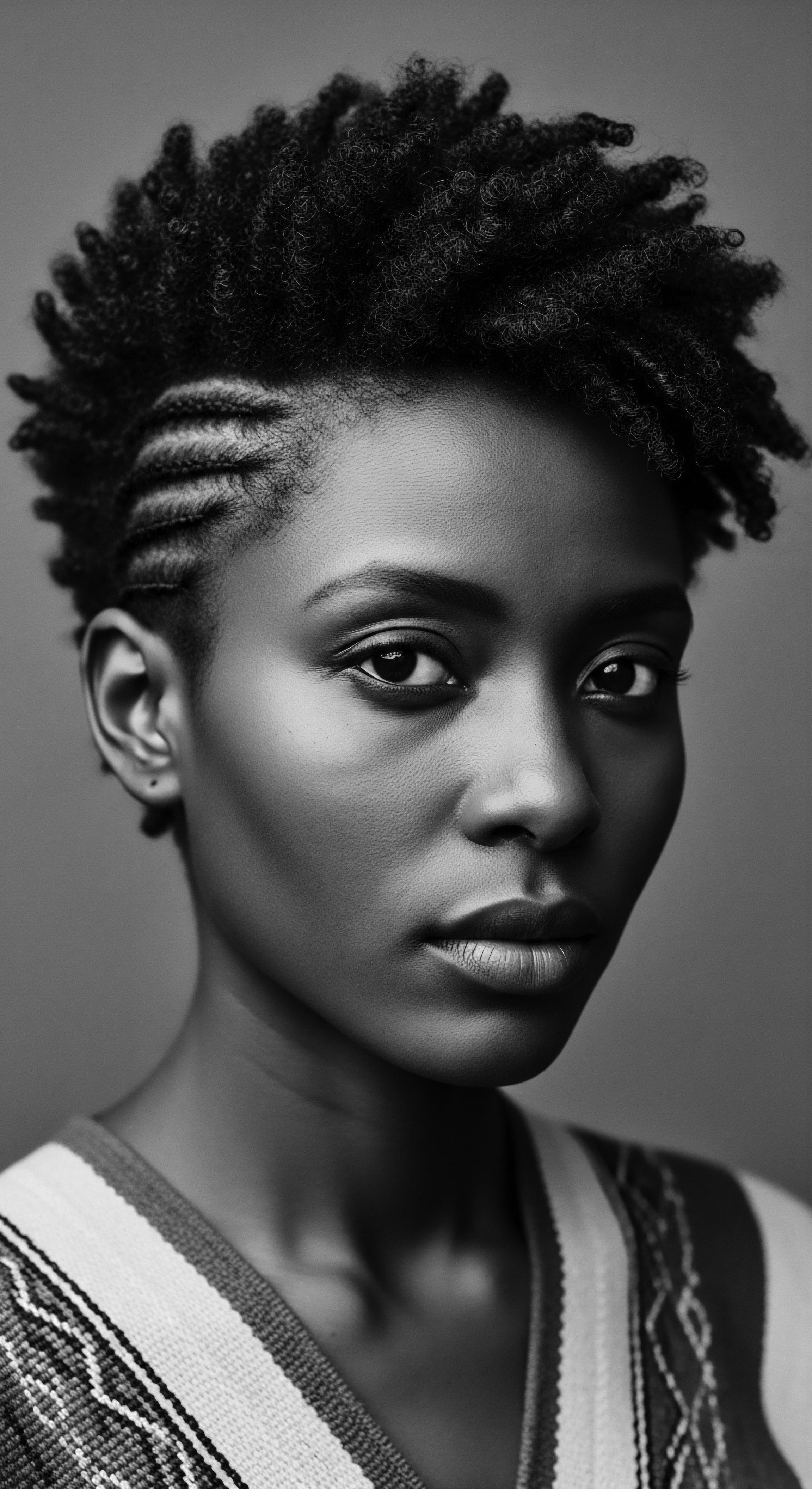
Reflection
To gaze upon an ancient comb, perhaps a carved wooden piece unearthed from the sands of Kemet or a polished bone implement from an ancestral West African community, is to touch a tangible echo of heritage. It is to connect with the hands that held it, the minds that conceived its form, and the textured strands it once gently navigated. These objects are not merely artifacts of a bygone era; they stand as living archives, imbued with the spirit of a continuum of care, ingenuity, and identity.
The journey through the nuanced designs of these ancient tools reveals a profound reverence for textured hair’s unique structure. It reveals a societal understanding that predates modern scientific classification, a knowing that resided in observation, practice, and the deeply held cultural significance of hair. Each wide-set tooth, each smoothed edge, speaks of a commitment to nurturing, rather than conquering, the natural inclinations of coily and kinky strands.
Our understanding of how ancient comb designs catered to textured hair’s structure is a powerful reminder of the enduring wisdom held within our lineage. It compels us to pause and consider the deep roots of our current hair care philosophies, recognizing that much of what we value today – gentle detangling, moisture retention, honoring natural patterns – finds its genesis in these ancient practices. The combs themselves become vessels, carrying the whispered instructions of ancestors who understood that caring for textured hair was a sacred act, a declaration of self, and a bond within community. They compel us to continue this legacy, to hold our strands with the same tenderness and informed respect that defined care across millennia.
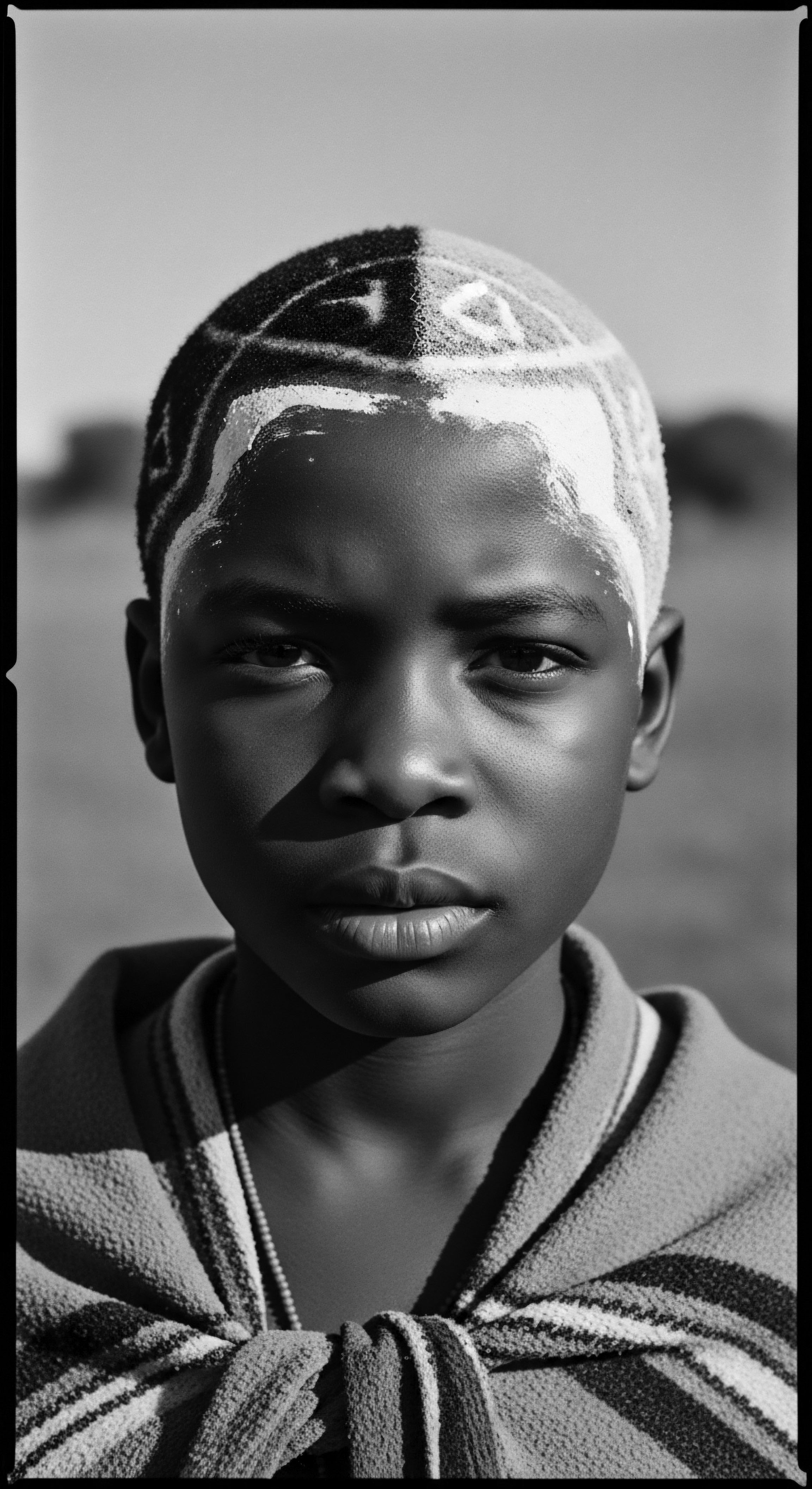
References
- Ashton, Sally-Ann. (2016). Combs from Kemet ❉ further thoughts on ancient Egyptian hair combs .
- Tulloch, Carol. (2015). The Afro Comb ❉ Revisited .
- Shaw, Thurston. (1969). Archaeology in Ghana .
- Davies, W. V. (1983). Egyptian Historical Writing .
- Petrie, W.M.F. (1920). Prehistoric Egypt .
- Fieldhouse, Janet. (2018). Hair Comb. Museum of Contemporary Art Australia.
- Ojo, G.J. Afolabi. (1966). Yoruba Culture ❉ A Geographical Analysis .
- Robins, Gay. (1993). Women in Ancient Egypt .
- Wilkinson, Richard H. (1994). Reading Egyptian Art ❉ A Hieroglyphic Guide to Ancient Egyptian Painting and Sculpture .
- Ashton, Sally-Ann. (2012). African Hair, Ancient and Modern .
